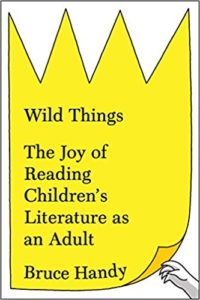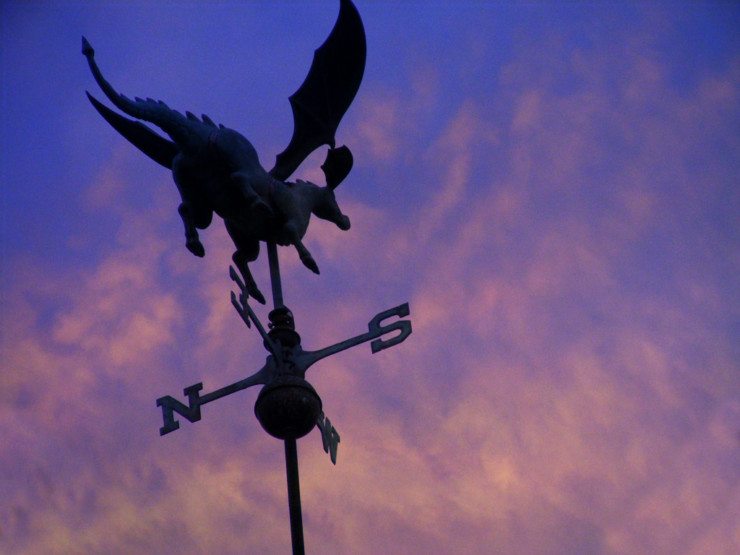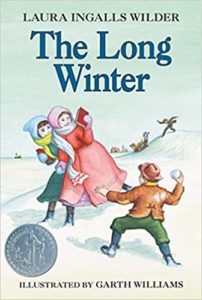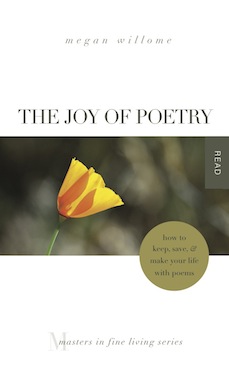She is gentle
She is wild
She’s a riddle
She’s a child
She’s a headache!
She’s an angel!
She’s a girl— from “Maria,” The Sound of Music
Last week I shared my reaction to the American Library Association renaming what used to be the Laura Ingalls Wilder Award to the Children’s Literature Legacy Award. My response to the decision led to reading and writing about Laura for a solid month. And the whole controversy made me miss Half-Pint. Pa gave her that nickname because she was “only a half pint of cider half drunk up.”
When I was eight years old, I had a red sunbonnet with yellow flowers, so I could be a pioneer girl like Laura. On a summer vacation out west, to Crested Butte, Colorado, I pretended Laura came along so I could show her the Rocky Mountains. I wanted her — a fictional character — to be my friend.
I felt that way about Laura even though she was not always a model of good behavior. There is a problem with Laura, a sort of How do you solve a problem like Maria-ness to her. Like Maria, Laura whistles. Her dress often has a tear. She’s impossible to pin down. As a child reader, I loved it when Laura was ornery, when she got jealous, when she was downright mean.

If I were to write a novel based on myself as a child, would I include my faults?
In Prairie Fires: The American Dreams of Laura Ingalls Wilder, Caroline Fraser writes that Wilder described herself as “quick to anger and vengeful to a fault.” Fraser praises Wilder for making the character of Laura as stubborn, restless, and stoic as Laura, the person. As I revisited the series through Fraser’s biography, I realized those were the character traits that drew me to Laura. The Little House series is not the story according to Mary, the good girl; it’s the story according to Half-Pint.
Laura did not start writing about her growing-up years until shortly after Mary’s death. That was right around the time of Black Tuesday, the start of the Great Depression, and the time her grown daughter, Rose Wilder Lane, was experiencing a different kind of great depression.
In response, she did what she had always done. She got busy. In this atmosphere of instability — grieving for her sister, distressed for her daughter, anxious about money — Laura Ingalls Wilder decided to write a memoir.”
Wilder’s memoir, Pioneer Girl, was grist for her literary mill, but it did not yield not the loaf. It was not published until 2014, long after her death, but Wilder needed to write it in order to write her fiction. Fraser writes that Wilder began writing “with her earliest memories and plowed right on, as if harrowing a field.”
The character Laura and her adventures are not exactly the same as the person Laura and hers. The Little House series leaves out several family tragedies, like the death of her brother Freddy, Pa’s debt problems, and some harrowing experiences in the towns of Burr Oak and Walnut Grove. It erases completely George and Maggie Masters and their baby, who lived with the Ingalls during The Long Winter. But the series leaves in many other dark chapters, including crop failures, the worst locust plague in American history, a winter in which the entire town almost starves to death, and Mary’s blindness.
If I were to write a novel based on my experiences as a child, which tragedies would I include? Which would I leave out?
The older I get, the more I want Laura — the real Laura, the writer — as a friend. I wish I could bring her in the car on our next westward vacation so we’d have oodles of time to discuss the constraints of fiction and memoir while we drove through farm and ranch land. We could talk about unexpected harvests, how Pa’s failed and Almanzo’s failed but Half Pint’s are still going strong.
Fraser writes, “It turned out there was indeed gold in the farm — but in books, not crops.”
In one of Wilder’s columns for the Missouri Ruralist titled “Make Your Dreams Come True,” she told readers that dreaming was important, but so was hard work, because life didn’t always turn out like her dreams for her flock of Leghorns: “if the hens had performed according to schedule; if the hawks had loved field mice better than spring chickens; if I had been so constituted that I never became weary.”
Sometimes Wilder was weary. That’s in her stories, along with her dreams and her hard work and her vengeful jealousies. Half Pint is the girl who can’t be held down, any more that you could keep a wave upon the sand or hold a moonbeam in your hand. How do you solve a problem like Half-Pint?
You don’t. You let her circle her wagons into the stories she wanted to tell — about a woman, who at every twist of the wind and at every turn of fate, refused tragedy. Even her false tales still read true.
Photo by James Jordan, Creative Commons, via Flickr. Post by Megan Willome, author of The Joy of Poetry.
Browse more children’s stories
“Megan Willome’s The Joy of Poetry is not a long book, but it took me longer to read than I expected, because I kept stopping to savor poems and passages, to make note of books mentioned, and to compare Willome’s journey into poetry to my own. The book is many things. An unpretentious, funny, and poignant memoir. A defense of poetry, a response to literature that has touched her life, and a manual on how to write poetry. It’s also the story of a daughter who loses her mother to cancer. The author links these things into a narrative much like that of a novel. I loved this book. As soon as I finished, I began reading it again.”
—David Lee Garrison, author of Playing Bach in the D. C. Metro
- Perspective: The Two, The Only: Calvin and Hobbes - December 16, 2022
- Children’s Book Club: A Very Haunted Christmas - December 9, 2022
- By Heart: ‘The night is darkening round me’ by Emily Brontë - December 2, 2022



Glynn says
If I wrote a novel based on my experiences as a child, it would almost be a story of multiple personalities.
I lived in an Americanized suburb of New Orleans, which could have been a suburb anywhere in the United States.
To visit my mother’s family, we would travel about 14 miles into the city, and find neighborhoods built before the Civil War, where everyone spoke with an almost Brooklynesque accent, where “Inez the crazy woman” roamed the streets along with other assorted characters straight out of a Flannery O’Connor story (some of them were my aunts and uncles), and where weddings and wakes were like Disneyland, including bartenders who didn’t ask why a 12-year-old asked for a gin-and-tonic.
And then, visiting my father’s family in north Louisiana, we would enter the Bible Belt, with church ice cream socials, big backyard vegetable gardens, and a few eccentrics like my uncle, who would sit on his back doorstep with his rifle, shooting the neighbor’s cats whenever they jumped into his yard.
Sandra Heska King says
I’d be first in line to read that novel!
I don’t know if I could find enough interesting stuff for a novel based on my experiences as a child. I went fishing. I went swimming. I picked blueberries. I played in woods. I ate the same soup as Soupy Sales was eating on a given day. I caught a gopher, and it got loose in a neighbor’s bedroom. We did live next door to an eccentric woman with a vendetta against dandelions and who did not like us kids to step one foot on her yard (which wasn’t anything to write home about.) Once she strung a wire across a corner so my brother couldn’t cut across it on his bike. Except he didn’t see it, and the wire cut him across the neck.
Megan Willome says
Glynn and Sandy, I would read novels based on both of these places, experiences, and people!
Sandra Heska King says
And Laura could spit.
I’ve been thumbing through a book I have of her letters–several addressed to “Manly Dear” signed “Lovingly, Bessie.”
In later letters… after he died and after she had spent several months caring for him because of the a shortage of nurses, she wrote…
“My heart is too sore to write more . . . and I am very lonely.”
“Since Mr. Wilder’s death it is hard for me to even write a letter . . . ”
“. . . there is nothing left but to on from here alone.”
The last letter in the book is to Rose–that Rose found in Laura’s desk written 4 years before she died: “When you read this I will be gone and you will have inherited all I have.” Then there were directions for distribution of some items…
Reading these and after finishing Provence 1970 and having sorted through some old family history, I’ve been feeling rather pensive. There’s a sadness about the past being the past and the changes and yet there’s nothing to do but go on and leave our own trails of crumbs. Speaking of… she *did* write down her recipe for gingerbread cookies.
I want Laura as a writer friend, too.
Megan Willome says
Yes, she could, Sandy!
Thanks so much for adding these details about the end of Wilder’s life.
L.L. Barkat says
In my girls’ room are Laura pinafores and bonnets that I made for them by hand. It seemed not apt to sew the dresses with a machine. A lot of buttons. Small. Down the back. The pinafores are poplin, the color of wheat, and I made chocolate poplin bonnets to go with them. Sara liked to wear hers like Laura. Bare to the sun. Quietly brazen of heart.
I can see little Megan with her red bonnet (and now I am wishing for photos!). I can see my own girls, living into the story and letting the story live out through them. I’m missing my little girls. Even though I’m happy to have them as women beside me now in life.
Megan Willome says
I came across a photo of that trip while moving my dad, but I’ll have to find it again.
I love that you handmade dresses and bonnets because to do anything less felt wrong.
My kids never cared for the Little House books. They both enjoyed stories, to be sure, but I do think future generations are already moving away from Laura.
Sandra Heska King says
I love that you made handmade dresses and bonnets, too, Laura! And with buttons–a lot of them. What treasures those are.
My kids never got into the books, either. But we dedicated a weekly family night to the TV show. It and Dr. Quinn.
Megan Willome says
I think the TV series may have had a lot to do with fostering Laura love in a generation.